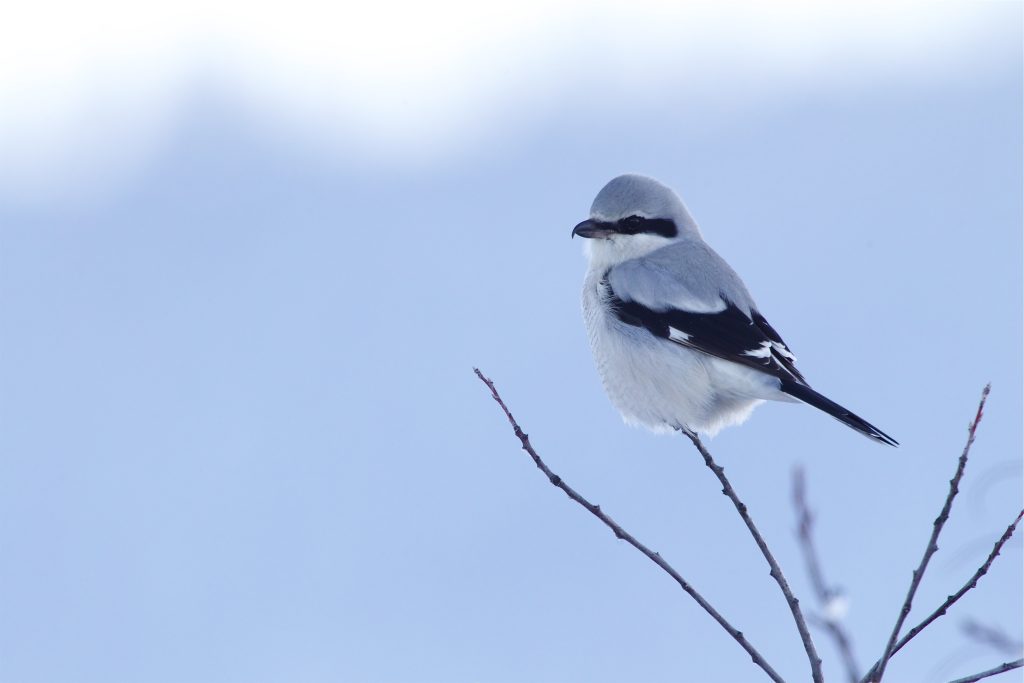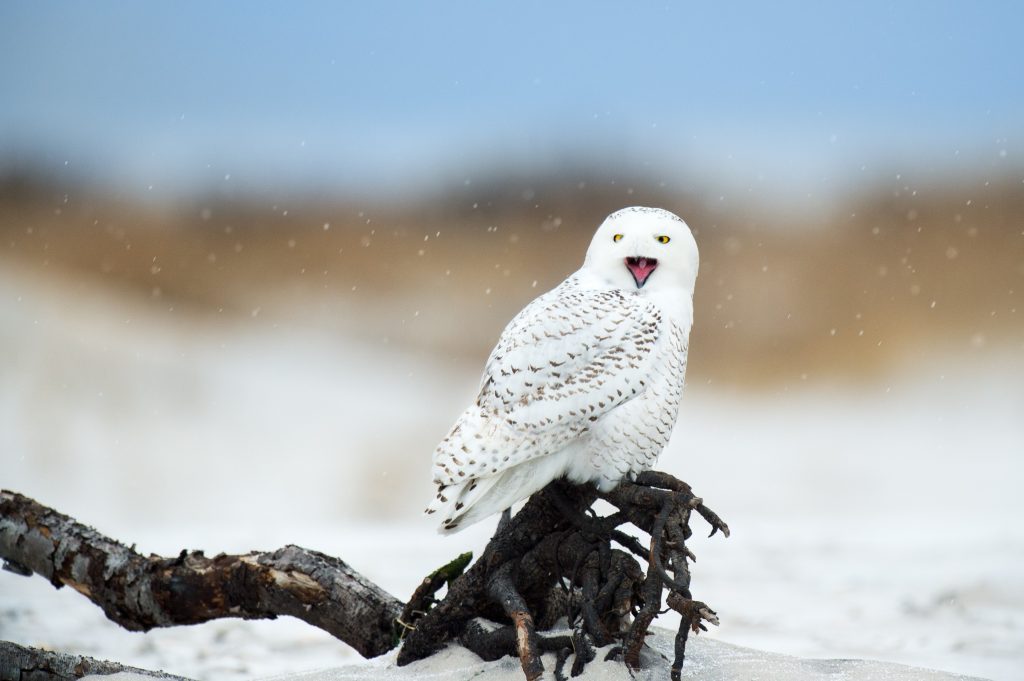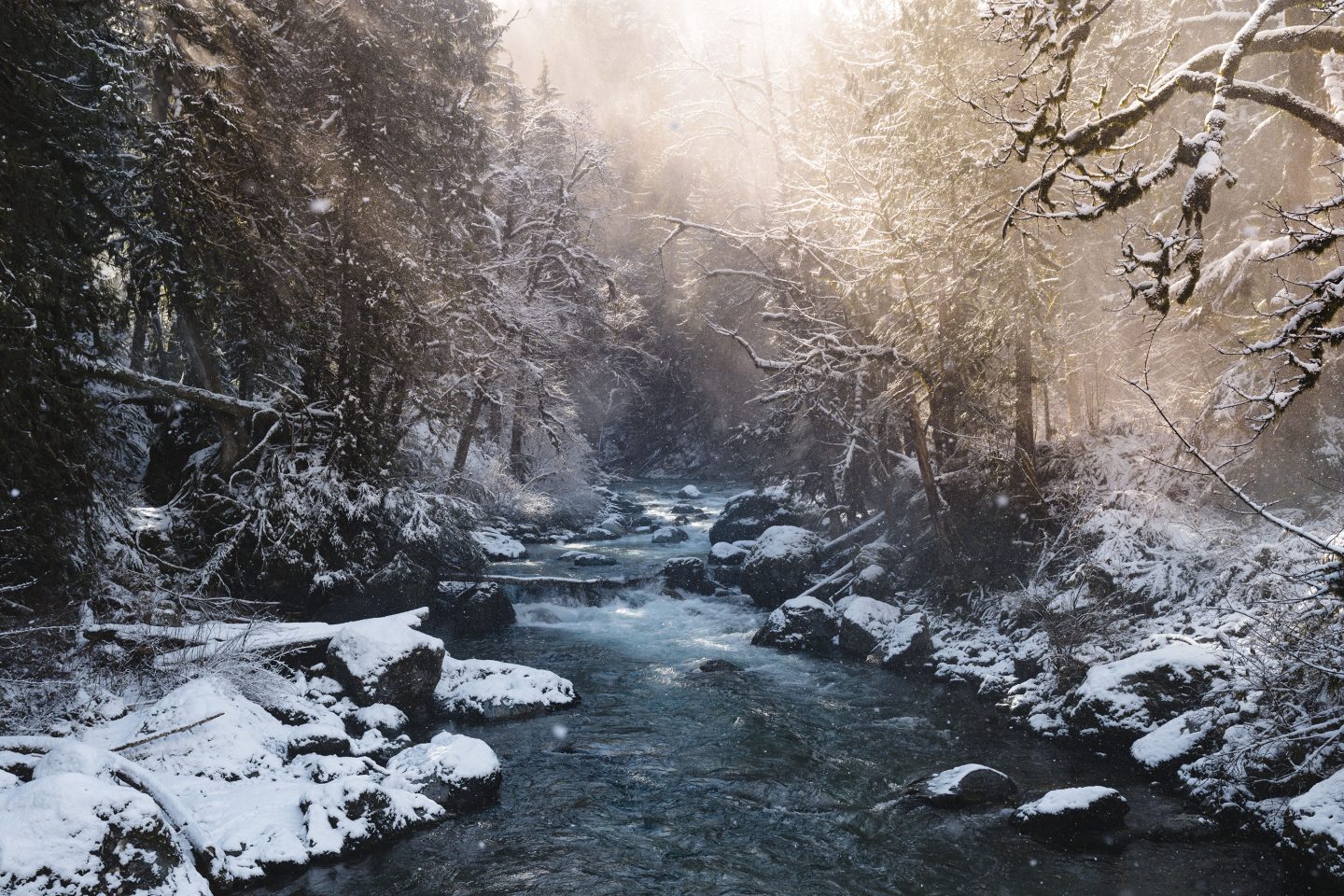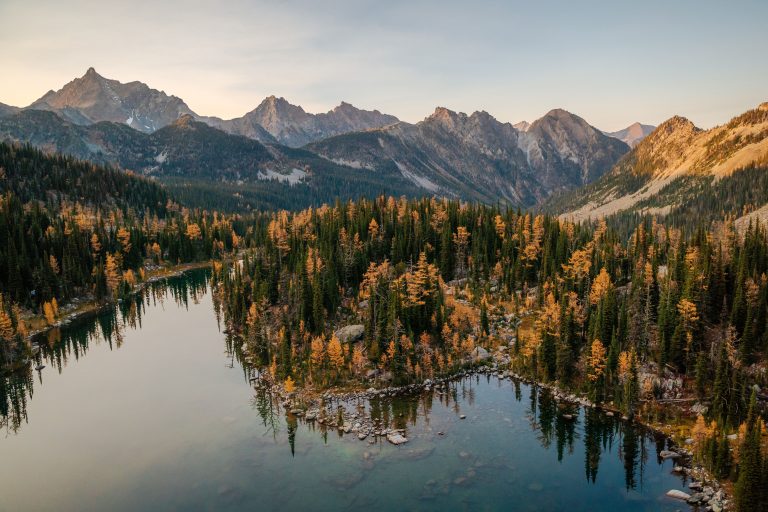It’s cold, and it’s wet, but the birds are still out there! Winter birding in BC may be a bit discouraging given the cooler weather and the dreary skies, but with the proper gear and some tips from us, you’ll be ready to enjoy the surprising amount of bird activity along the BC Bird Trail. Plus, what better way to push yourself to keep active outside than the chance of seeing waterbirds, raptors, and so, so many ducks!
Why Birding In Winter Can Be Great
Birding is diverse. It can be a thrilling and exciting adventure, or it can be a quiet and relaxing experience. It’s a perfect way to explore new outdoor areas in your local community and keep yourself active.
And for all you avid birders, this time of the year is excellent for bird photography! The sun is lower in the sky, meaning you don’t have to deal with the harsh overhead light of summer midday. You also get nicer lighting for longer periods of time. The esteemed “golden hours” for lighting around dusk and dawn are at much more reasonable times than in the summer—A 7:45am sunrise is a lot easier to go shoot than a 5:30am one!

Admittedly, some unavoidable downsides to winter birding can be deal-breakers for some. But rain, wind, snow, and everything else BC winters throw at us can be mitigated with proper gear. Dressing in layers can help you during those windy sessions along the shores. Getting some good windproof gloves can save your hands some future hurting. Making sure to keep yourself dry will also help stave off the cold, so don’t forget your rain jacket! And maybe leave a spare set of clothes in your vehicle or backpack if you can, just in case.
And again, a tip for bird photographers, protect your gear! Colder weather drains batteries quicker, so pack a couple of spares for your camera. Also, you may want to invest in a rain cover for your camera that can protect your gear and let you shoot on rainy and snowy days. Heavy-duty covers are available if you’ll be out shooting in the elements quite a bit, but there are also inexpensive ones that can fold into a pocket in your bag just in case the weather turns while you’re out.
Winter Birds to Watch For
It’s all about the birds, of course! Whether it’s out on the water, along the coasts of oceans and lakes, or inland in our forests, plains, and backyards, birds are everywhere in the winter.

On the water, oceans and lakes are prime winter spots for birding, as ducks and other water birds are plentiful in the colder months. Cormorants of all kinds are out in higher numbers and Buffleheads are especially common on the water. You’ll find wide varieties of ducks in lakes, such as Northern Pintails, Wigeons, Green-winged Teal, Greater and Lesser Scaup, Canvasback, and Ruddy Duck. The Langford Bird Trail Outpost has lots of great lakes to watch for waterfowl.
Out on the ocean, sea ducks such as Common and Barrow’s Goldeneye, Mergansers (Common, Hooded, and Red-breasted), Scoters (Surf, White-winged, and Black), and Harlequin Ducks can often be seen from many of BC’s coastal areas.

Grebes, especially Horned, Red-necked, and Western varieties, are a more common sight in winter. American Coots, birds in the Rail family that look a bit like black chickens but swim like ducks, are also present in large flocks on lakes. These diving ducks are plentiful in open water areas of the Osoyoos Bird Trail Outpost. You’ll also see Hooded Mergansers in this area, so keep your eyes peeled for the puffed-up crest of the male, a brilliant arc of white that makes them easier to spot.

Along the water’s edge, keep your eyes out for shorebirds. The shorelines on the South Fraser Bird Trail are great for winter birding. Dunlin can be found in massive flocks and other winter shorebirds such as Sanderling, Surfbird, Black Turnstone, and Black-bellied Plover dot the beaches.
On the land, winter offers some great opportunities for raptor sightings. Bald Eagles are especially common as they feed on the salmon spawning along many of the Bird Trails, particularly the Sea to Sky Bird Trail, Langford Outpost, and Fraser Valley Bird Trail. They will typically stick around even after the spawn has finished.
Farmlands and fields are great places to camp out for short-eared Owls who will patrol the area. They are a fascinating species because unlike most owls who are nocturnal hunters, you can see short-eared owls active and hunting during the day, which is much easier to enjoy! Northern Harriers also patrol farms and marshlands. Look for a hawk-like bird with a face that looks disc-like like an owl. These raptors will hover in place before diving down at their prey. The South Fraser Bird Trail has some good spots of fields and farmlands to watch for winter raptors.

In the region of the Columbia Valley Bird Trail, ducks and waterfowl are less common in the winter months, but raptors just Rough-legged Hawks and Northern Pygmy-Owls are a more common sight. The Columbia Valley also gets BC’s common Cedar Waxwings in warmer months, but winter is the time to see Bohemian Waxwings. Common Redpolls and Snow Buntings might also make an appearance on your outings, and you might even get lucky and see a vagrant Northern Cardinal, a winter favourite from the East that doesn’t grace BC very often.
Northern Shrikes, incredible predatory songbirds known as “butcher birds”, are also an exciting rarer winter sight in the Columbia Valley. You can also spot them along the Osoyoos Bird Trail Outpost. These tiny predators hunt for small mammals and will save their meals for later by impaling them on the thorns of Hawthorn trees.

Along the Sea to Sky Bird Trail, pine grosbeaks can be seen hanging around in trees with cones. These large finches use their large beaks to open the cones and eat the seeds inside. Chestnut-backed chickadees will also be around through the winter. They look very similar to the black-capped chickadees but have warm brown feathers on their back, hence the chestnut name! One tiny bird to watch for is the Golden-crowned kinglet. The brilliant flash of yellow on their heads might make them easier to see, but the small flocks of these birds can move fast! Watch for them hanging out in trees eating seeds and berries.
The biggest prizes of winter are the rare sightings of a Snowy Owl or Gyrfalcon. These northern icons don’t come south very often, but the Fraser Valley and South Fraser Bird Trails will get a sighting every couple of years, so keep an eye on rare bird alerts.

And for more common sights around your backyard or local parks, sparrows around this time of the year liven up Bird Trails all across the province. Fox Sparrows can often be seen foraging on the ground at the side of a trail and Golden Crowned Sparrows are all over the place, with their song being a winter soundtrack staple.
Backyard Bird Feeders
If you’re looking for an easier way to watch birds from your backyard or the warmth of your home, consider bird feeders! They are a great way to see a variety of birds close to home, plus you’re helping them out during these colder times. Just be sure to keep your feeders clean for the safety of the birds, to prevent the spread of disease. Birds Canada has important tips on how to best maintain your bird feeders, such as cleaning every two weeks, cleaning the ground underneath, and moving the feeders around to reduce the concentration of droppings and seed waste.
Before you get your bird feeder out, consider the types of birds in your areas and what types of seeds/food they would enjoy. Some birds like chickadees, juncos, and grosbeaks appreciate feeders with seeds. Birds like woodpeckers are particular to suet feeders. Suet is a fat mixture that will sometimes also have seeds in it.

If you live in the Lower Mainland or Vancouver Island, Anna’s Hummingbirds have become a year-long appearance. To help these tiny birds during the colder months, many people will keep hummingbird feeders throughout the winter. But please note – if you are going to choose to put out a hummingbird feeder for the winter it is a commitment! These hummingbirds can adapt quickly, and don’t necessarily become “dependent” on feeders, but the winter months make it harder for them to find natural food.
When you set up a feeder, it’s good to keep it in the same place all winter long so they know where a reliable food source is. Once they start visiting regularly, if the feeder disappears, it will take them a lot of time and precious energy to find another food source. Do them a favour and commit! You will also have to make sure you clean the feeder regularly, change the syrup often, and be sure to check on it so it doesn’t freeze!
Now, we’re off to enjoy the crisp air of British Columbia’s beautiful winter and hopefully check off a couple of birds from our BC winter bird list.



